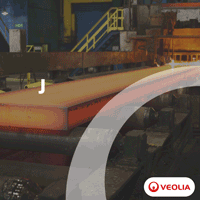SSAB Reducing Emissions With Use of Natural Gas
09/19/2013 - SSAB in Borlänge, Sweden, is converting one of the reheating furnaces in its rolling mill to natural gas, thereby achieving SSAB’s environmental target of reducing nitrogen oxide emissions to 300 tonnes/year.
In addition, emissions of carbon dioxide will be reduced to 40,000 tonnes/year and the current emissions of 400 tonnes of sulfur dioxide per year will cease almost entirely.
SSAB’s vision is a stronger, lighter and more sustainable world. Part of this work involves adapting the energy system to enable a more bio-based energy supply, diversifying the risks through the use of several types of fuel, and prioritizing growing energy markets.
The conversion of furnace 302 to natural gas will take place in two stages: the first to be carried out in the summer of 2014, with the second and final stage being implemented at the end of 2014/beginning of 2015. Parts of the work will be carried out in cooperation with Borlänge Energi.
“The liquid gas must be heated in order to become flammable gas and this will take place using heat from the district heating network’s return pipeline. Through the use of this low value energy, Borlänge Energi is able to increase efficiency in its electricity production, to the benefit of both the environment and the inhabitants of Borlänge,” said Tomas Hirsch, head of strategic energy management in Borlänge and Finspång.
SSAB’s vision is a stronger, lighter and more sustainable world. Part of this work involves adapting the energy system to enable a more bio-based energy supply, diversifying the risks through the use of several types of fuel, and prioritizing growing energy markets.
The conversion of furnace 302 to natural gas will take place in two stages: the first to be carried out in the summer of 2014, with the second and final stage being implemented at the end of 2014/beginning of 2015. Parts of the work will be carried out in cooperation with Borlänge Energi.
“The liquid gas must be heated in order to become flammable gas and this will take place using heat from the district heating network’s return pipeline. Through the use of this low value energy, Borlänge Energi is able to increase efficiency in its electricity production, to the benefit of both the environment and the inhabitants of Borlänge,” said Tomas Hirsch, head of strategic energy management in Borlänge and Finspång.



-(220-x-200-px)-(130-x-130-px)-(220-x-200-px).jpg?lang=en-US&ext=.jpg)
.gif?width=200&height=200&mediaprotectionhash=ddb07947ad3b4ab959a83714461eccd5c6895f370695eb035a9ff7aa736f8ad9&ext=.gif)





